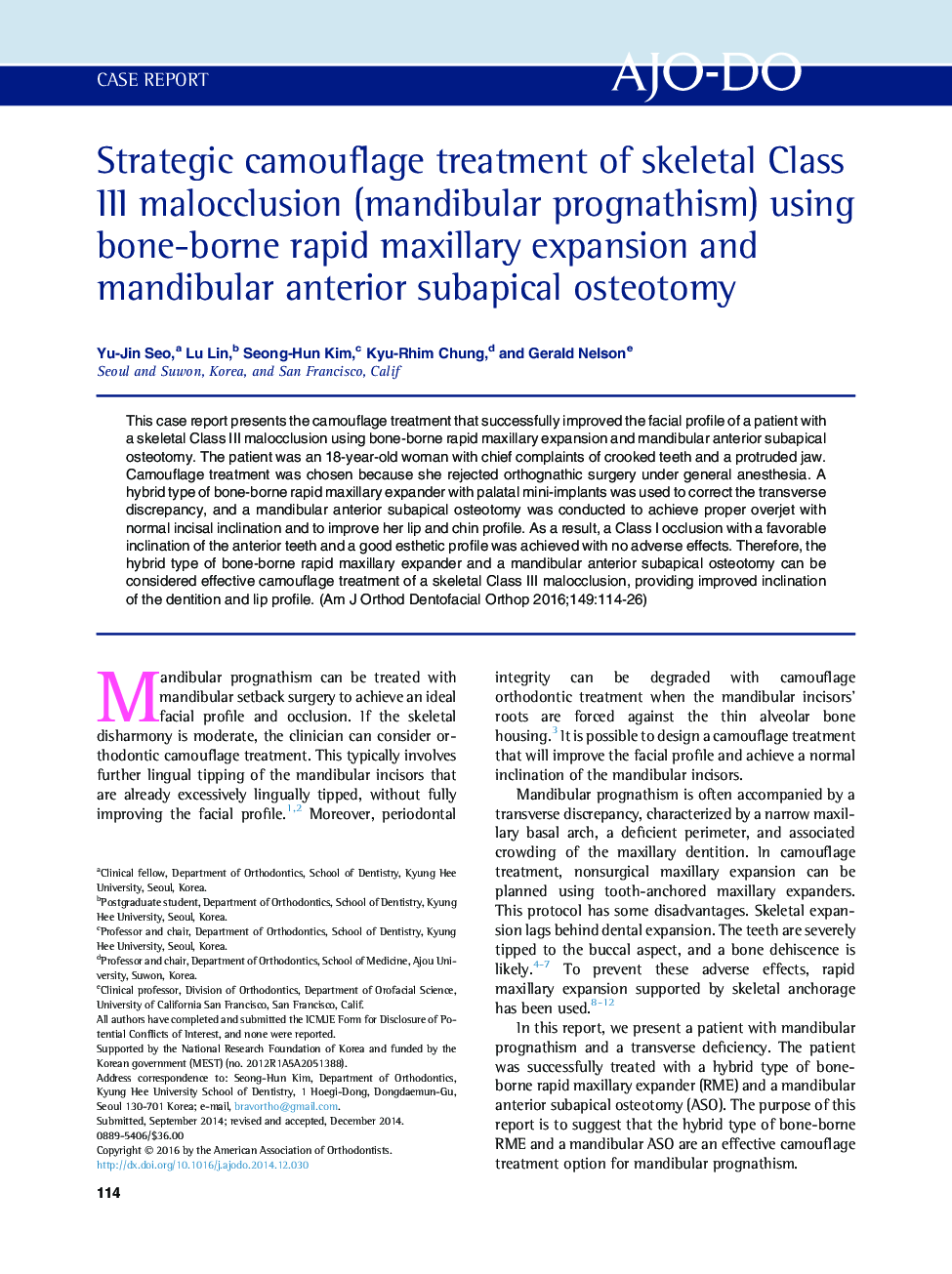| Article ID | Journal | Published Year | Pages | File Type |
|---|---|---|---|---|
| 3115765 | American Journal of Orthodontics and Dentofacial Orthopedics | 2016 | 13 Pages |
•Alternative camouflage treatment for skeletal Class III malocclusion is presented.•Bone-borne maxillary expander provides effective skeletal effects in a young adult.•Two surface-treated mini-implants and premolars to be extracted support expansion.•Mandibular anterior subapical osteotomy is performed under local anesthesia.•Mandibular anterior subapical osteotomy improves incisor inclination and lip profile.
This case report presents the camouflage treatment that successfully improved the facial profile of a patient with a skeletal Class III malocclusion using bone-borne rapid maxillary expansion and mandibular anterior subapical osteotomy. The patient was an 18-year-old woman with chief complaints of crooked teeth and a protruded jaw. Camouflage treatment was chosen because she rejected orthognathic surgery under general anesthesia. A hybrid type of bone-borne rapid maxillary expander with palatal mini-implants was used to correct the transverse discrepancy, and a mandibular anterior subapical osteotomy was conducted to achieve proper overjet with normal incisal inclination and to improve her lip and chin profile. As a result, a Class I occlusion with a favorable inclination of the anterior teeth and a good esthetic profile was achieved with no adverse effects. Therefore, the hybrid type of bone-borne rapid maxillary expander and a mandibular anterior subapical osteotomy can be considered effective camouflage treatment of a skeletal Class III malocclusion, providing improved inclination of the dentition and lip profile.
